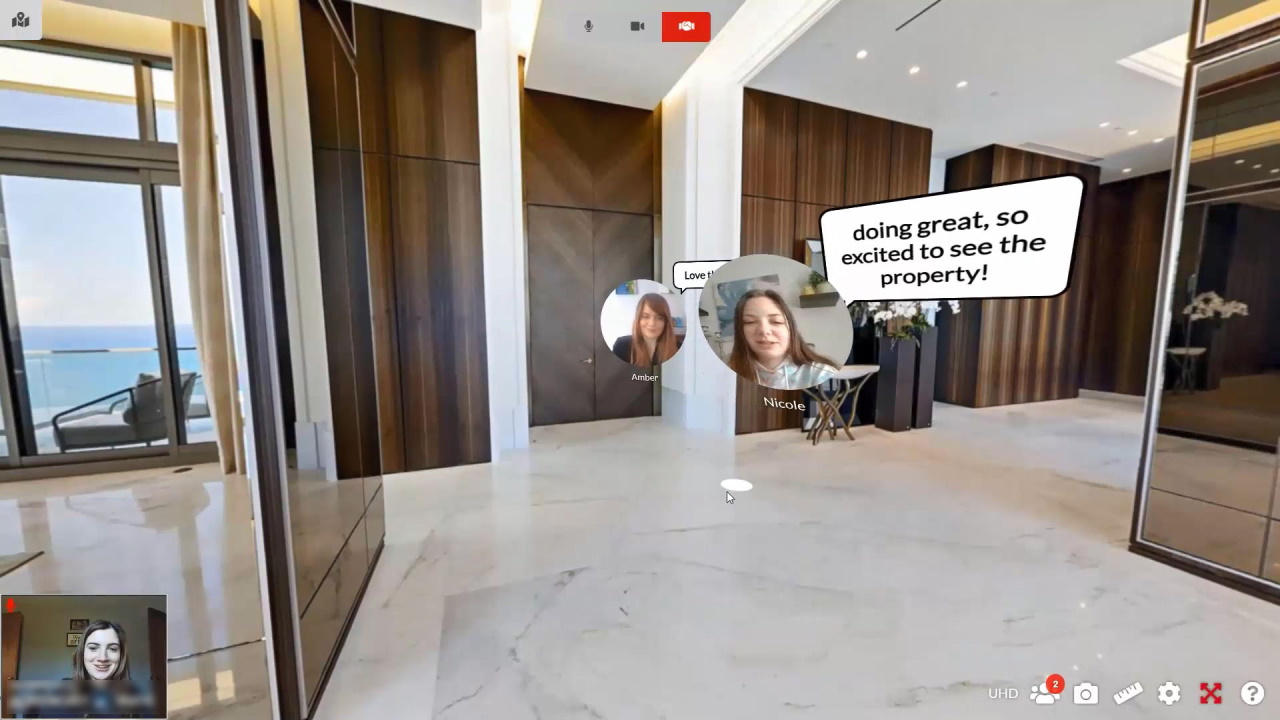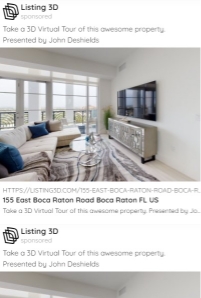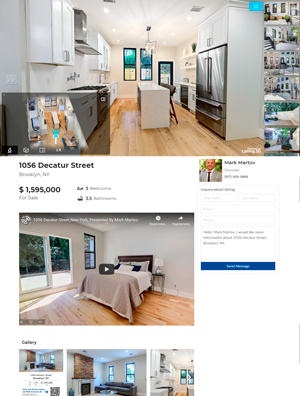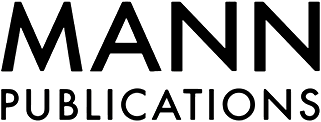The Ultimate Guide to Creating Engaging Real Estate Newsletters That Convert

A periodic newsletter remains one of the most effective ways for real estate professionals to engage their audience and generate new business.
In fact, according to HubSpot’s 2022 State of Marketing Report, email newsletters drive over 3x more revenue than any other marketing channel. Further data reveals 77% of marketers have seen increased engagement with their newsletters in the past year.
But creating fresh, valuable content to consistently engage subscribers is challenging.
This comprehensive guide will teach you:
- How to select the optimal newsletter content to achieve your specific marketing goals
- Techniques to craft compelling real estate articles and resources
- Where to source qualified done-for-you content
- Tips to format your newsletter for maximum engagement
- Tools to design eye-catching and professional templates
Follow this advice to keep your readers hooked, build brand loyalty, and boost conversions.
Know Your Audience and Goals
Let’s start by getting clear on who you want to reach with your real estate newsletter.
Are you targeting potential homebuyers and sellers in a specific geographic farm area? Looking to connect with investors interested in local property? Or focused on past clients and referral partners?
Defining your audience allows you to customize content accordingly throughout the newsletter creation process.
Now consider – what is the primary purpose of your newsletter? Do you aim to:
- Generate new buyer and seller leads
- Establish yourself as an invaluable market resource
- Promote current listings
- Develop referral partnerships
- Retain past clients and sphere members
Most newsletters have multiple goals, but prioritizing one overarching objective guides your content planning.
For example, if generating new leads is your focus, emphasize market updates, local home valuations, and listings of the week. If building community engagement is the goal, devote more space to local events, business spotlights, and neighborhood news.
With your audience and intentions clear, let’s explore specific ideas and strategies to engage your real estate newsletter subscribers.
Lead Generation Content
For real estate agents focused on driving new business, your newsletter becomes a lead generation tool. Dedicate significant space to market-focused content that attracts potential clients.
Feature Local Listings
Prominently showcase new on-market homes, upcoming open houses, price reductions, or off-market pocket listings.
But don’t just include basic listing details – tell a story around the properties. For example:
“This historic 3 bedroom colonial on Elm Street was originally built in 1932 and retains its charming original moldings and hardwood floors. It’s a rare find for buyers looking for vintage character in the heart of downtown.”
Browsing interesting listings helps buyers visualize living in your farm area.
Conduct Video Home Tours
Video tours take this a step further by letting you virtually walk buyers through homes and neighborhoods.
Leverage mobile phone cameras or affordable virtual tour software to quickly capture engaging footage:
- Commentate on the layout, renovation potential, and desirable amenities as you film.
- Spotlight spaces like large backyards where kids could play.
- Note practical features like ample storage or access to transit.
Videos personalized with your commentary build familiarity and trust with potential clients.
Analyze Market Conditions
Buyers and sellers want to understand current market dynamics as they make real estate decisions. Become their source for authoritative stats and projections.
In each edition, include relevant monthly or quarterly market updates:
- Active listing counts and months of inventory
- Median and average sales prices
- Days on market and list-to-sales-price ratios
- Pending sales activity
- Commentary on trends and seasonality
Local Realtor associations, MLS portals, and data aggregators like Zillow provide timely housing stats.
Just present the data visually with simple charts or graphs to boost engagement.
Share Valuable Neighborhood Insights
Many potential clients are relocating or buying investment properties in unfamiliar areas.
Help them learn about appealing neighborhoods through:
- Area overviews detailing home styles, amenities, demographics, and median values
- Comparisons between two popular neighborhoods to inform home searches
- Spotlights showcasing local parks, restaurants, schools, and recreation
- Interviews with residents describing local lifestyle perks
This “insider’s guide” to the communities they may buy into builds value and trust.
Community-Building Content
For established agents looking to engage their sphere of influence, center your newsletter around fostering community.
Devoting space to local happenings and issues makes subscribers feel connected to the area as valued residents.
Cover Recent Local Events
Recap and share photos from recent events like summer concerts in the park, farmers’ markets, holiday parades, and fundraisers.
Rather than just publicizing upcoming events, reporting on happenings after-the-fact fosters community spirit.
Spotlight Local Businesses
From beloved long-time diners to hot new startups, highlight businesses that give neighborhoods special character.
Profile owners, share their offerings and stories, and cultivate pride-of-place. You’ll also build relationships with featured business owners.
Get Neighborhood News Buzz
Curate new real estate developments, store openings and closings, infrastructure projects, noteworthy neighbors, or local issues.
This “town gazette” amplifies positive stories and keeps the community informed and engaged.
Support Local Causes
Non-profit spotlights, volunteer opportunities, fundraiser announcements, and tips for supporting area charities make subscribers feel invested locally.
Feature Resident Profiles
Interview interesting long-time locals, small business owners, artists, or civic leaders about life in the community.
This provides an authentic insider’s view of the people and stories that make the area special.
Value-Added Content
Beyond directly promotional content, enrich your real estate newsletter with resources subscribers find genuinely useful.
This value-added content builds your credibility as a trusted advisor.
Share Design and Home Improvement Tips
With sites like Pinterest and HGTV, DIY home project inspiration is ubiquitous. Curate and share smart renovations, décor trends, landscaping ideas, or handy household tips.
Cater to all homeowners – single-story starter home upgrades, downtown condo decor, and luxury remodels alike. Interview local contractors to lend expert insights.
While indirect, this content keeps you top of mind as a knowledgeable resource when subscribers eventually look to buy or sell.
Provide Financial and Investment Education
Demystify real estate financing and investing for readers. Explain down payments, PMI, mortgage qualification, refinancing, investment properties, 1031 exchanges, and more.
Interview experienced lenders and real estate investors for tips and guidance. Many readers lack financial literacy, so this knowledge sharing demonstrates genuine commitment to their interests.
Share Local History
Vintage neighborhood photos, profiles of pioneering founders, and tales of iconic past businesses pique interest while cultivating community roots.
Tap local libraries, historical societies, and long-time residents as sources to bring the area’s past to life.
Dig Into Real Estate Data
Complement market stats with deeper data dives like:
- Analysis of multi-year home value appreciation by neighborhood
- Charts illustrating seasonal price fluctuations
- Detailed comparisons on taxes, insurance, and utilities across zip codes
- Forecasts on local demographics, employment, and development
Audiences appreciate number-driven insights versus simple monthly stats recaps.
Provide Legal and Regulatory Guidance
Decode complex real estate laws, taxes, zoning policies, and regulations at the local, state, and federal level.
Legal or regulatory changes impact real estate decision-making. Position yourself as the advisor who keeps readers informed.
Optimizing Your Formatting
You’ve brainstormed the topics – now transform your content into a professionally designed, visually engaging newsletter.
Follow these tips to format your real estate newsletter for maximum opens, clicks, and conversions.
Limit Featured Listings
The temptation is to cram every new listing into your newsletter. But restraint is advised.
Highlight just 2-3 noteworthy or unique properties per edition. This creates exclusivity and anticipation for more listings in future editions.
Get Visual
Articles with images and videos generate 94% more views than text-only content according to HubSpot.
Every page of your newsletter should incorporate:
- Relevant high-quality photos
- Charts and graphs
- Info-graphics and illustrations
- Embedded video clips
Images should reinforce or relate to adjacent content to maintain context.
Need affordable imagery? Stock resources like Pixabay, Pexels, and Unsplash offer 100% free library access. Or leverage Canva’s library of over 2 million images, graphics, and templates.
Use Strategic Content Hierarchy
Structure your newsletter content in order of importance – lead with more crucial sections and bury supplementary info like legal disclosures toward the end.
headers, fonts, text formatting, and spacing also signal hierarchy. Key segments should instantly stand out.
Write Concise Copy
Attention spans are fleeting. Optimize newsletter content for skimming:
- Break sections into short digestible paragraphs 3-4 lines maximum.
- Use descriptive headers and subheaders liberally.
- Bold key stats, facts, or takeaways readers can grasp quickly.
- Include bullet points and numbered lists for easy scanning.
Link Out to Extended Content
For readers wanting to dive deeper, link to your blog, social posts, or other media.
This engages subscribers online beyond your newsletter.
Promote Your Expertise
Ensure your photo, branding, contact info, and professional credentials are prominently visible. Reinforce why readers should trust you as their real estate advisor.
Direct Readers to Take Action
Every newsletter should include clear calls-to-action so readers engage further, such as:
- Click through to browse current listings.
- Check out an embedded video tour.
- Schedule a consultation.
- Share the newsletter with friends.
Place CTAs strategically near relevant content for optimal response.
Sourcing Quality Content From the Experts
Creating excellent real estate content requires significant time and expertise. If you’re feeling stretched thin, don’t go it alone.
Leverage qualified sources to access done-for-you newsletter content:
Local Government Data
Sign up for housing reports from your city government economic development office. These offer a treasure trove of authoritative market statistics and projections.
MLS Portal Content
Major MLS platforms like Zillow and realtor.com publish extensive local housing data and articles. Adapt their content or analysis for your readers.
Industry Association Resources
Organizations like the National Association of REALTORS, real estate investor networks, and SRS publish studies, legal updates, and tips you can excerpt or summarize.
Real Estate Blogs and Magazines
Trusted industry blogs like The Close provide market insights, how-to’s, and statistics you can share with proper attribution. Realtor magazines like RISMedia publish monthly columns perfect for newsletter fodder.
Paid Done-For-You Services
Vendors like Keeping Current Matters, Coffee & Contracts, and ACESocial create packaged real estate content you can license and customize starting at $39 per month. This can alleviate content writing entirely.
The key is adding your insights, commentary, and local context to curated content to make it distinctly yours.
Optimizing Your Newsletter Template Design
Even the best content falls flat in a poorly formatted template.
Follow these design practices to captivate your real estate newsletter audience:
Choose an Intuitive Navigation Menu
Enable readers to easily jump between sections. Place menu links prominently at the top of each newsletter edition.
Ensure Mobile Optimization
With over 50% of emails opened on mobile, ensure your template is mobile-friendly. Use a responsive design that adapts to fit phone screens.
Limit Window Width
Wide text columns become unreadable on mobile. Limit line length to 500-600 pixels for comfortable reading.
Establish Visual Hierarchy
Use layout, color, size, spacing, and typography to distinguish headers, feature segments, photos, and calls to action.
Use Generous White Space
Cramming in content looks cluttered. Let ample margins and space between elements improve scannability.
Limit Font Styles
Pick 1-2 complementary fonts and use consistently. Too many unique fonts appear disjointed.
Make CTAs Stand Out
Encourage clicks by using contrasting colors, borders, size, or placement to accentuate your calls to action.
Review on All Devices
Test the final design on desktop, phone, tablet, and email clients to identify formatting issues beforehand.
Selecting the Right Newsletter Tools
Robust technology and tools empower you to create, customize, send, and track professional real estate newsletters at scale.
Here are the top solutions recommended by today’s top agents:
Email Service Providers
To manage contacts, design templates, and deliver your newsletter, leverage dedicated email service providers like MailChimp, Constant Contact, or ConvertKit.
Most offer basic plans starting under $10/month including list management, creative design tools, and analytics. Scale up for advanced features like automation.
CRMs
Many customer relationship management systems like Follow Up Boss and Top Producer include integrated email marketing. Design, send, and track engaging newsletters directly within your closed-loop CRM.
Listing Curation Tools
Simplify sourcing relevant properties with tools like Listingbook that automatically aggregate listings matching your criteria from the MLS to feature in your newsletter.
Graphic Design Platforms
Access user-friendly design capabilities without coding on platforms like Canva. Easily create charts, infographics, social graphics, and illustrations to visually enhance your newsletter.
Email/Website Analytics
Measure performance with Google Analytics, open and click tracking, link redirects, and goal conversion tracking. See what content drives actions.
Virtual Tour Software
Create immersive listing videos and neighborhood tours with all-in-one solutions like Matterport or more affordable mobile apps like Pocketlist.
The right martech stack allows you to manage the entire newsletter production process efficiently in-house.
Putting It All Together
Now that we’ve explored ideas and strategies for creating high-converting real estate newsletters, let’s summarize key takeaways:
- Define your audience and goals – Tailor content, tone, and length accordingly. Mix promotional and non-promotional articles.
- Prioritize lead generation content – Listings, market updates, videos, neighborhood guides, and data help attract new prospects.
- Spotlight local businesses and events – Build community by showcasing what makes your area special.
- Add value through education – Finance tips, home improvement advice, and real estate data establish your expertise.
- Write concisely and visually – Engage readers by optimizing content for skimming, adding graphics, embedding videos, and using calls-to-action.
- Curate qualified done-for-you content – Repurpose articles, stats, and insights from trusted industry sources. Localize it.
- Leverage the right tools – Email service providers, CRMs, listing aggregators, design platforms, and analytics enable efficient creation from start to finish.
The most effective real estate newsletters blend promotional and non-promotional content to engage, educate, entertain, and convert readers. By following the strategies outlined in this guide, you’ll keep your subscribers opening, reading, and responding edition after edition.
Now put these tips into action to grow your real estate business through the trusted medium of email newsletters. Your future clients are waiting to hear from you!
Real estate agents can face difficulties in a low inventory market, but there are strategies they can employ to succeed. It’s important to stay up-to-date on the market, prioritize listings, work with buyers, build relationships with other agents, be innovative with financing options and use cutting-edge technologies to stand out during the listing presentation, and focus on cultivating long-term relationships with clients. By implementing these tactics, agents can thrive even in challenging market conditions. Overwhelmed and looking for some help? Listing3D has got you covered. Schedule a demo with us.
Additional Services
Take Your Marketing Even Further






Additional Features at no cost
Part of any package












